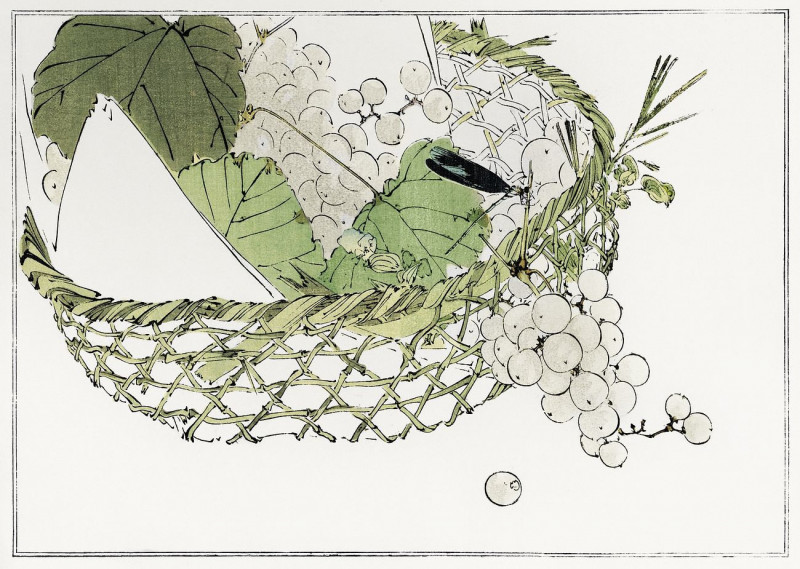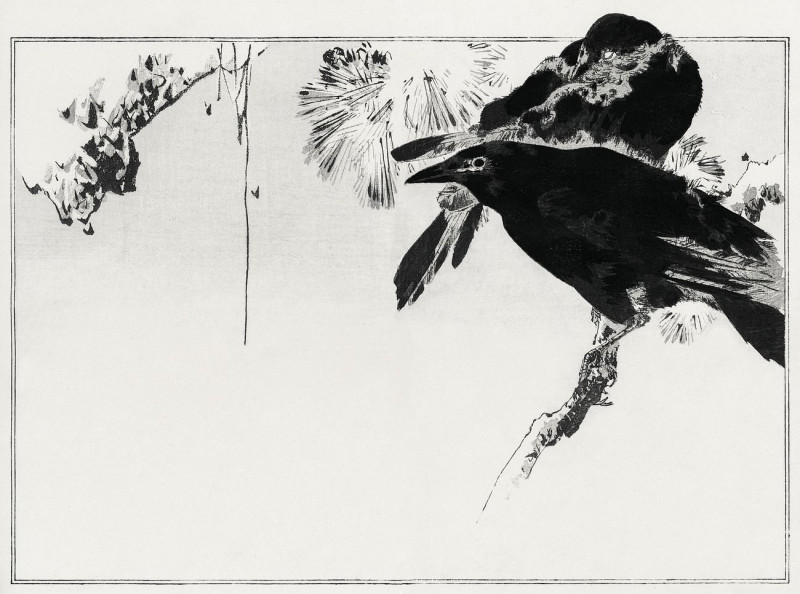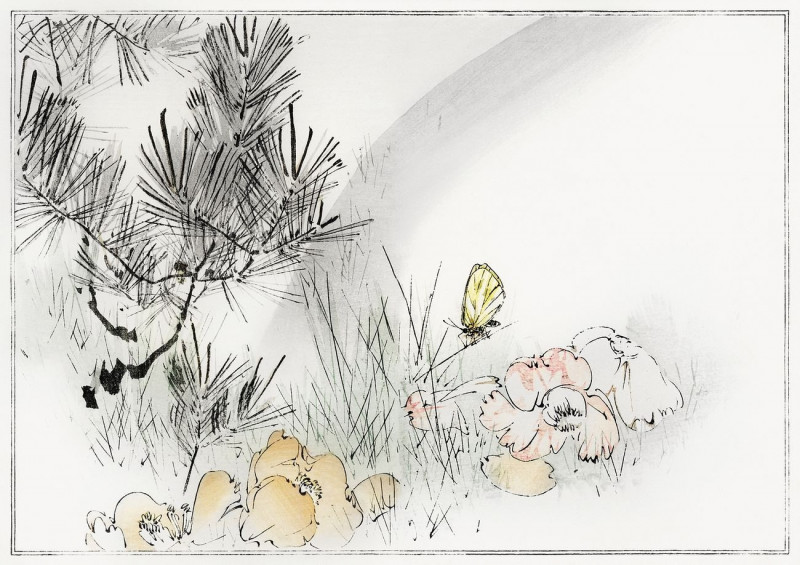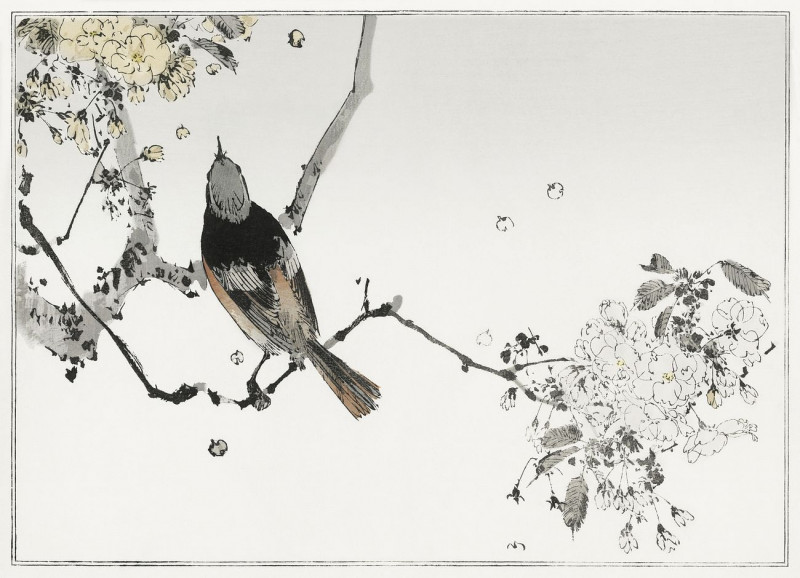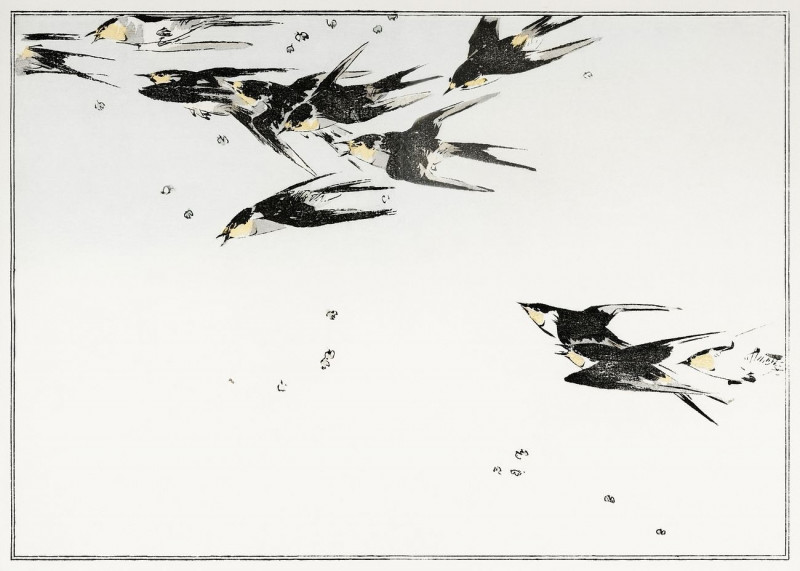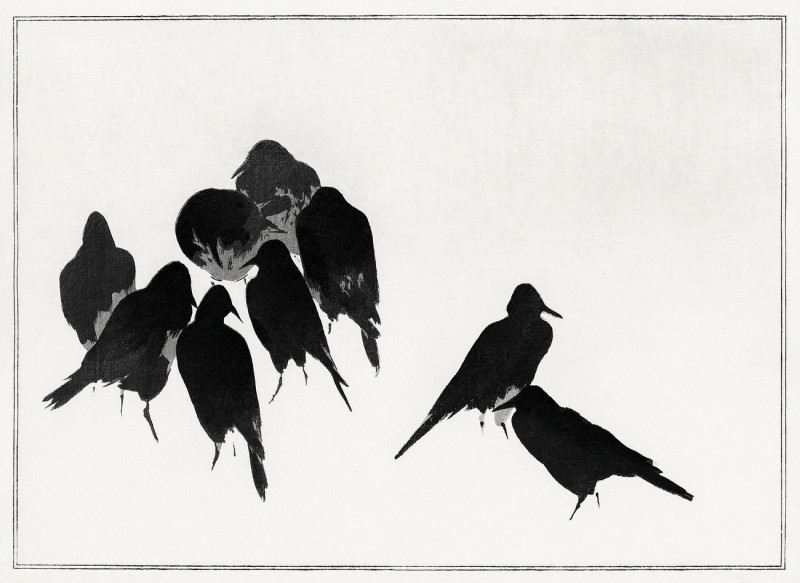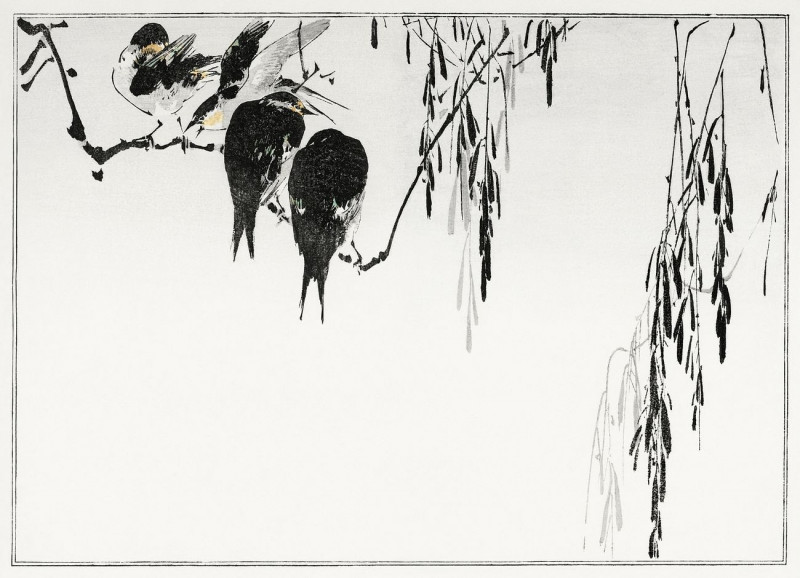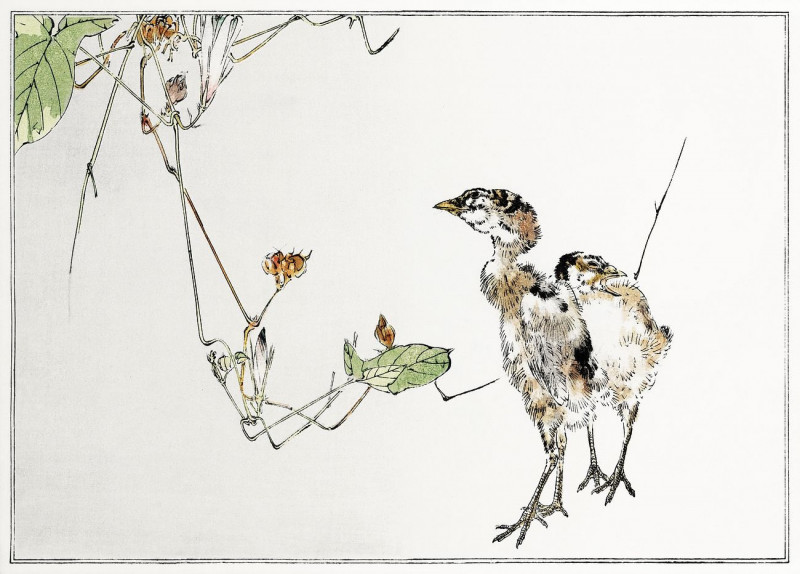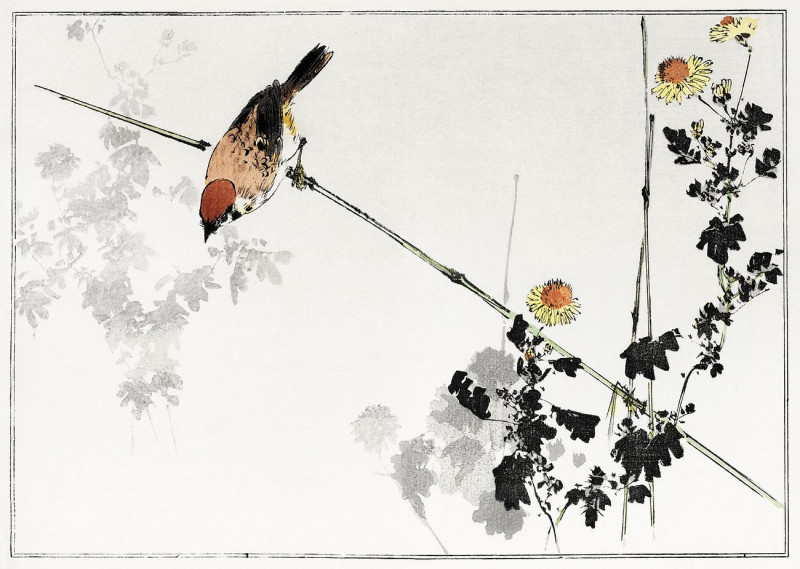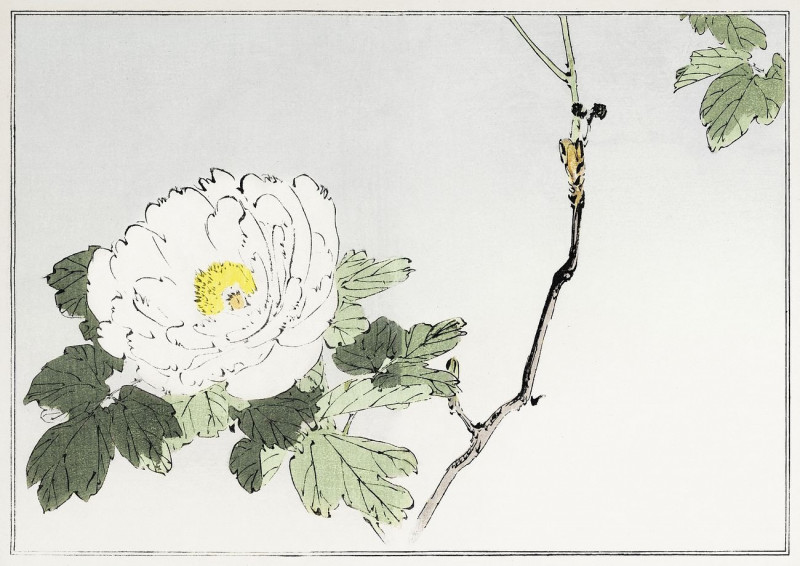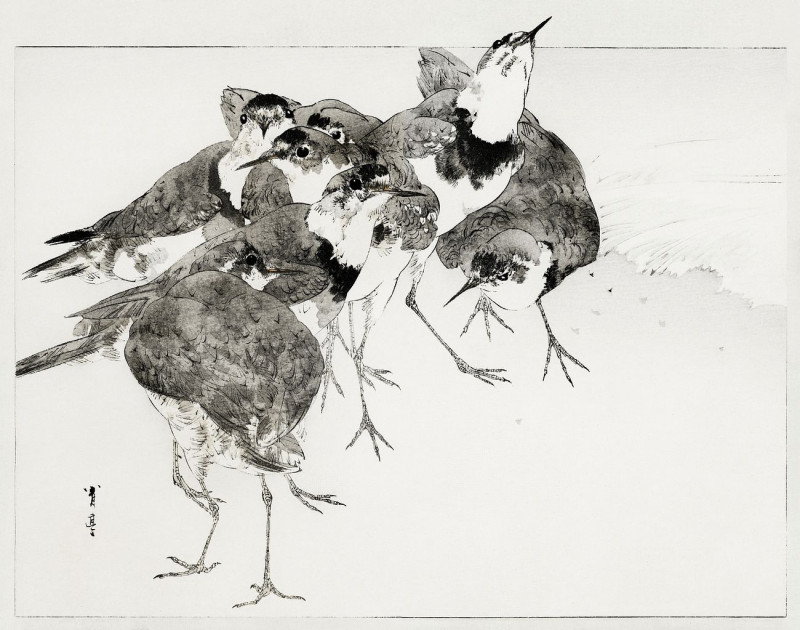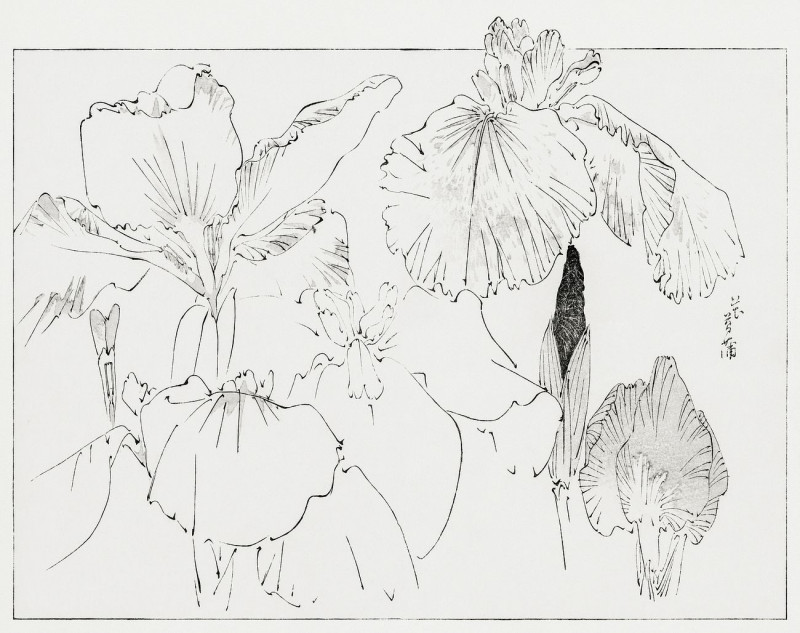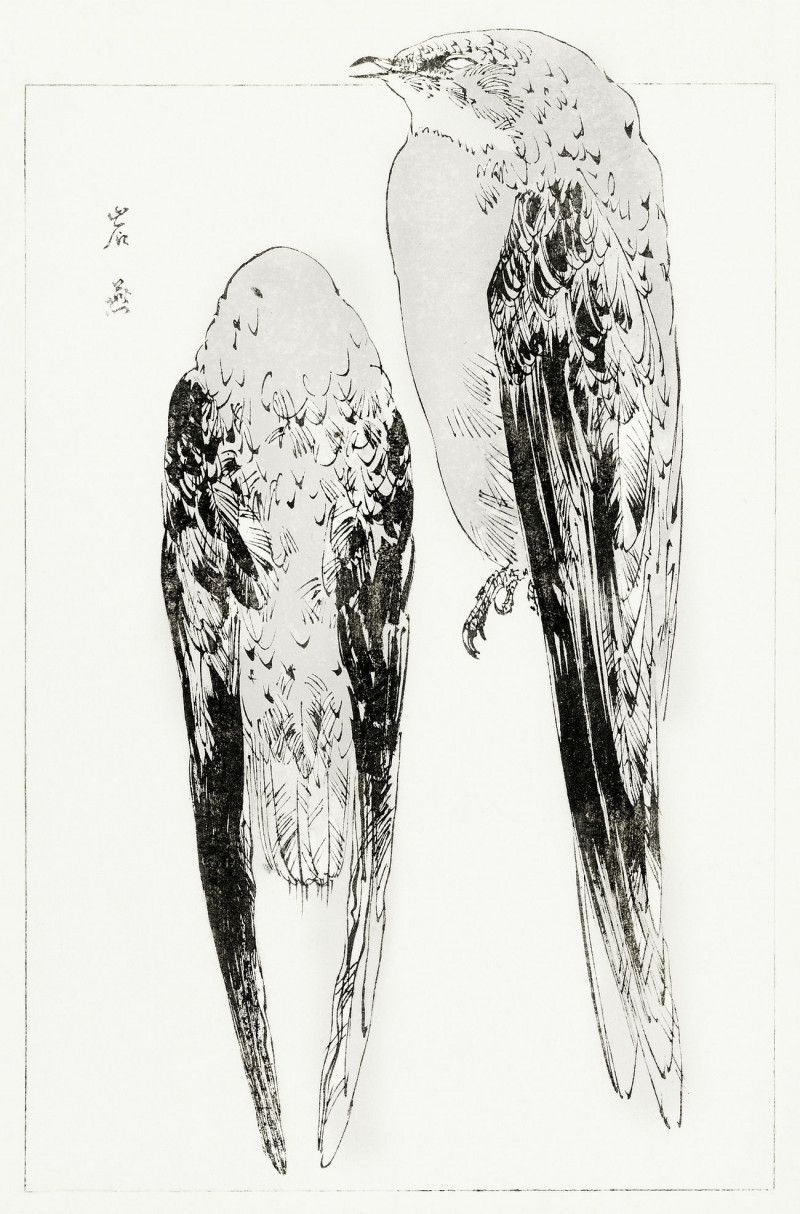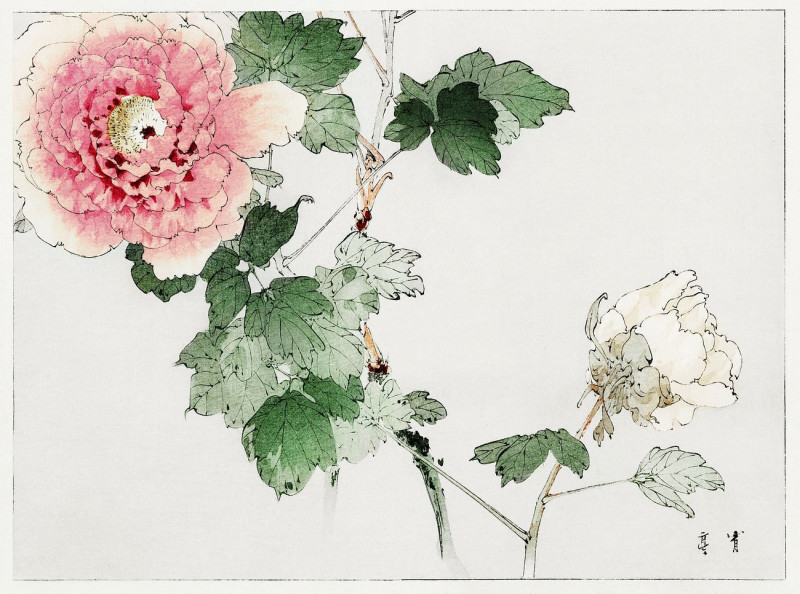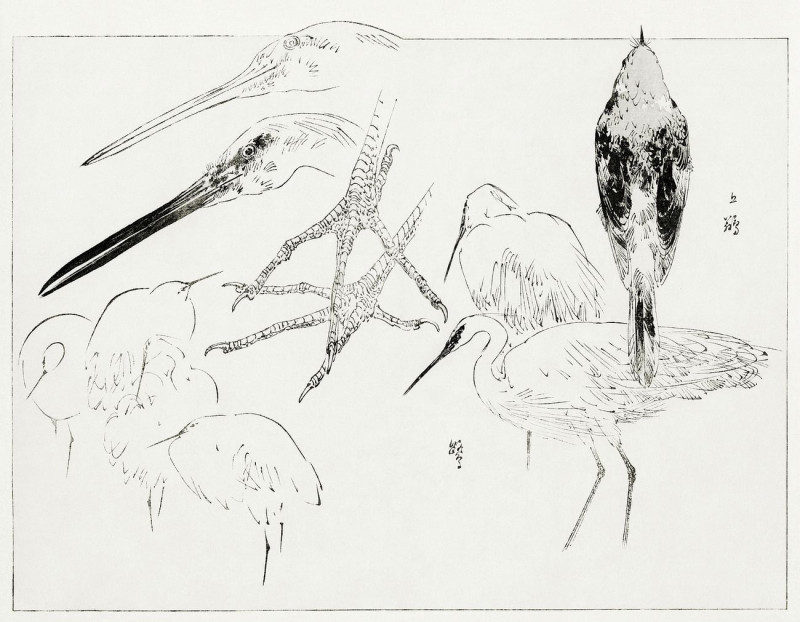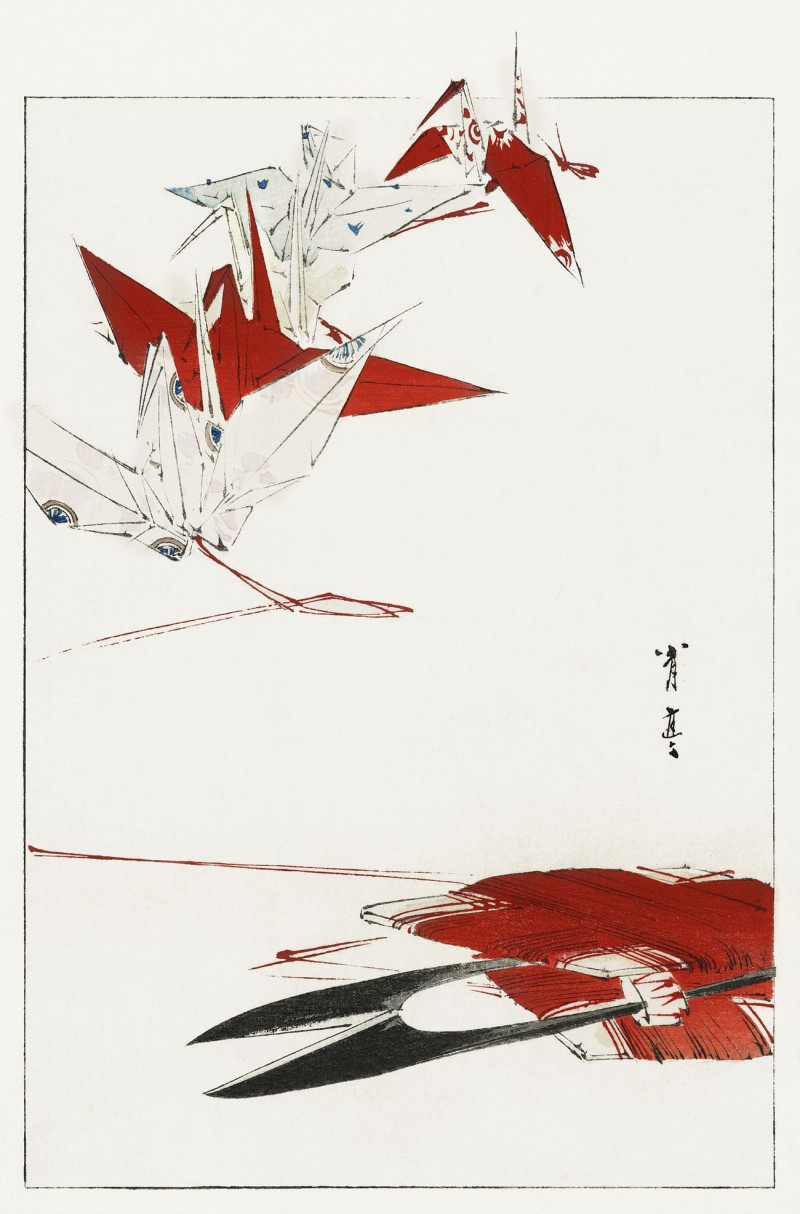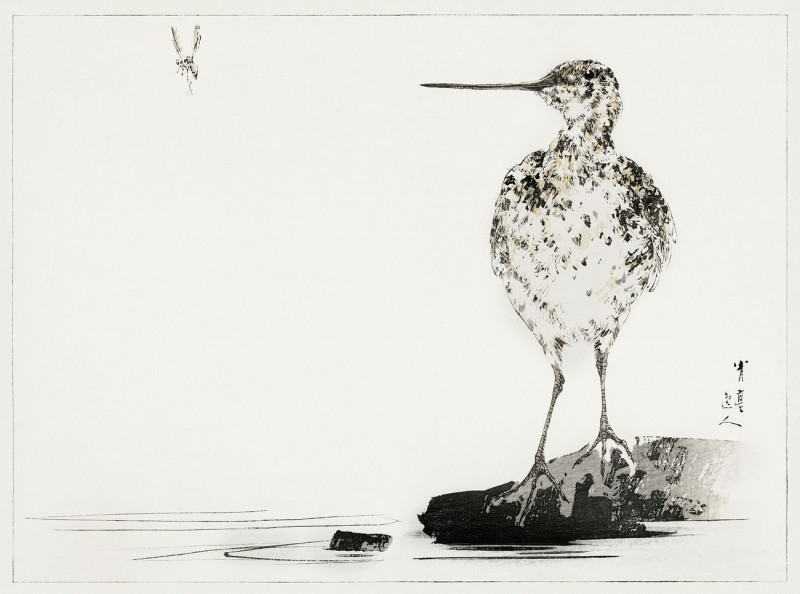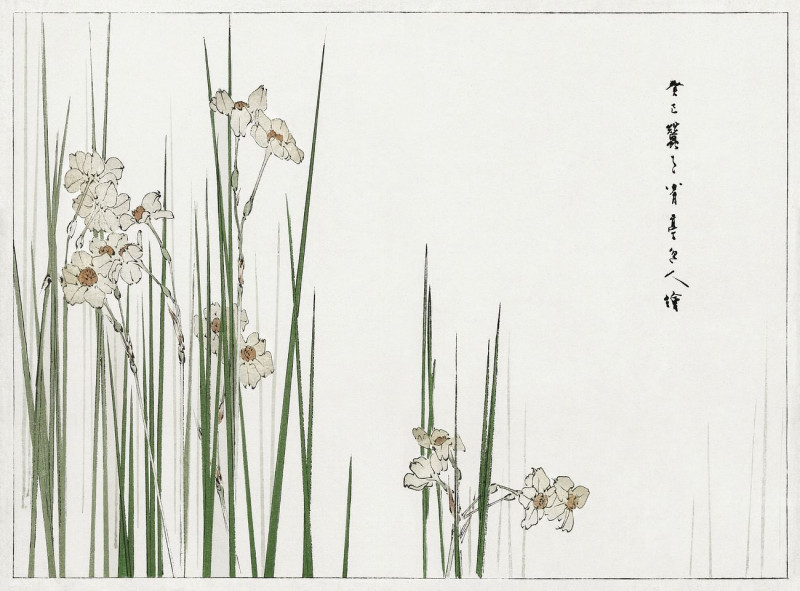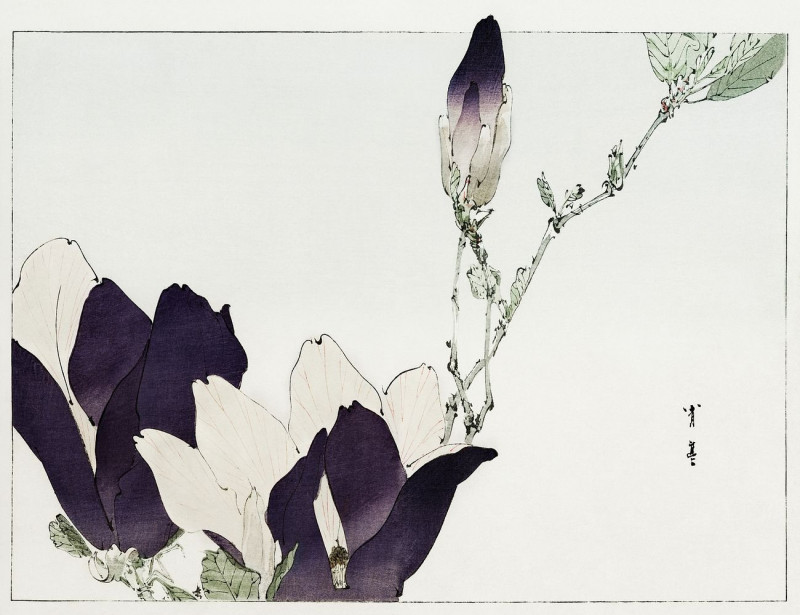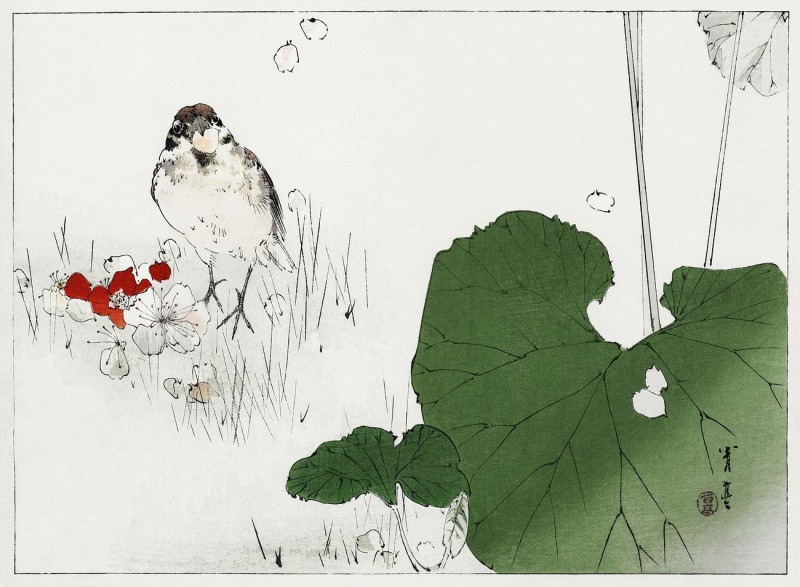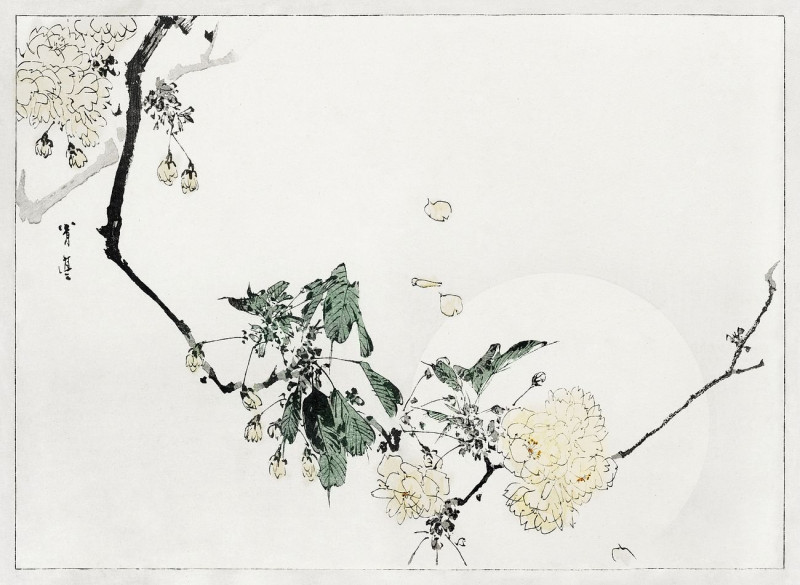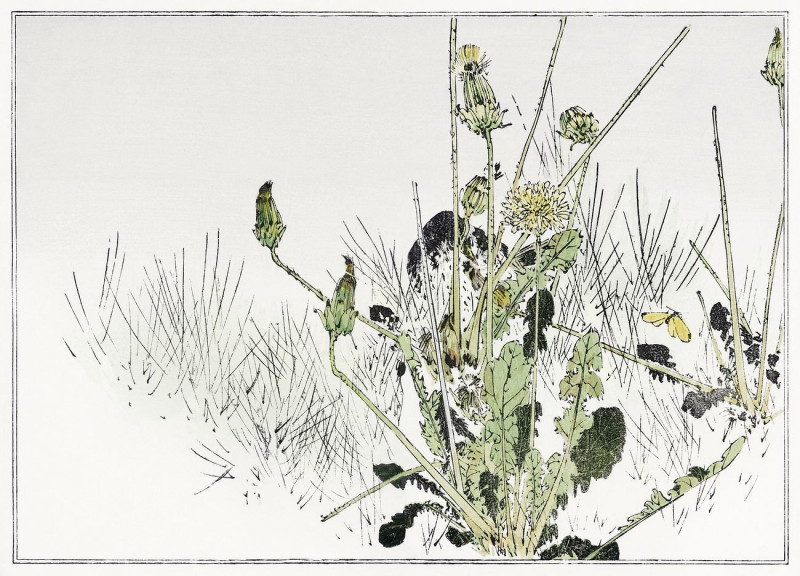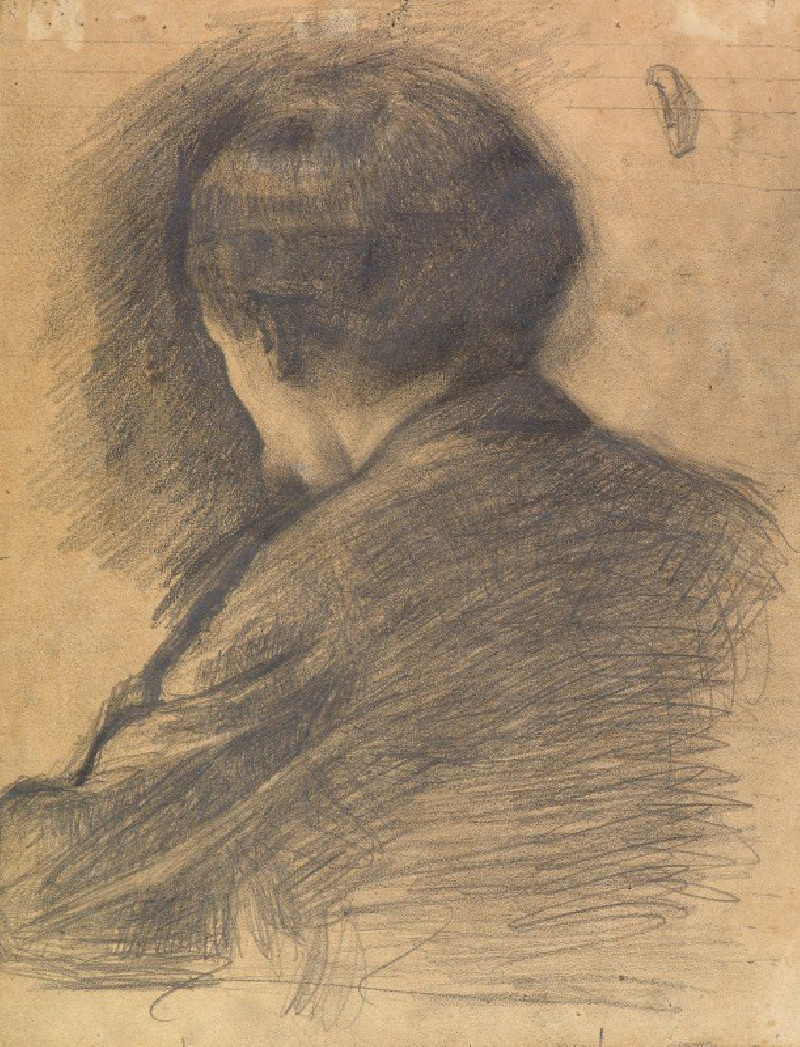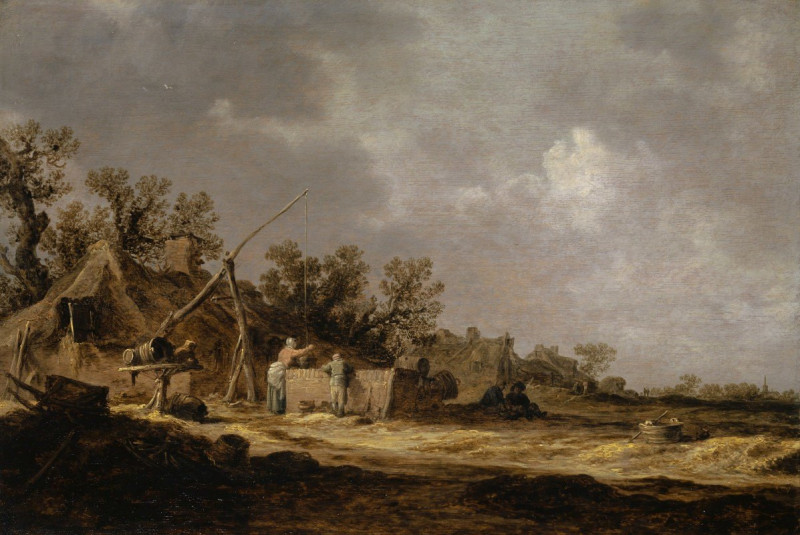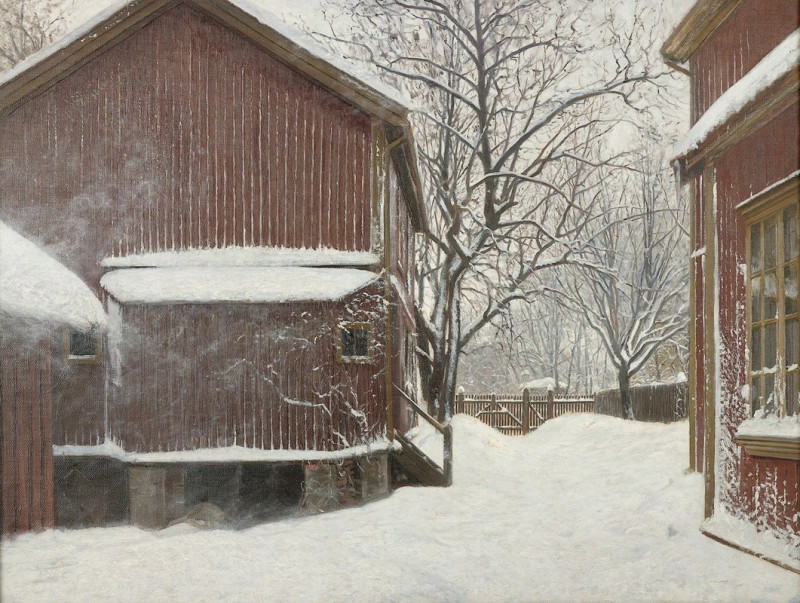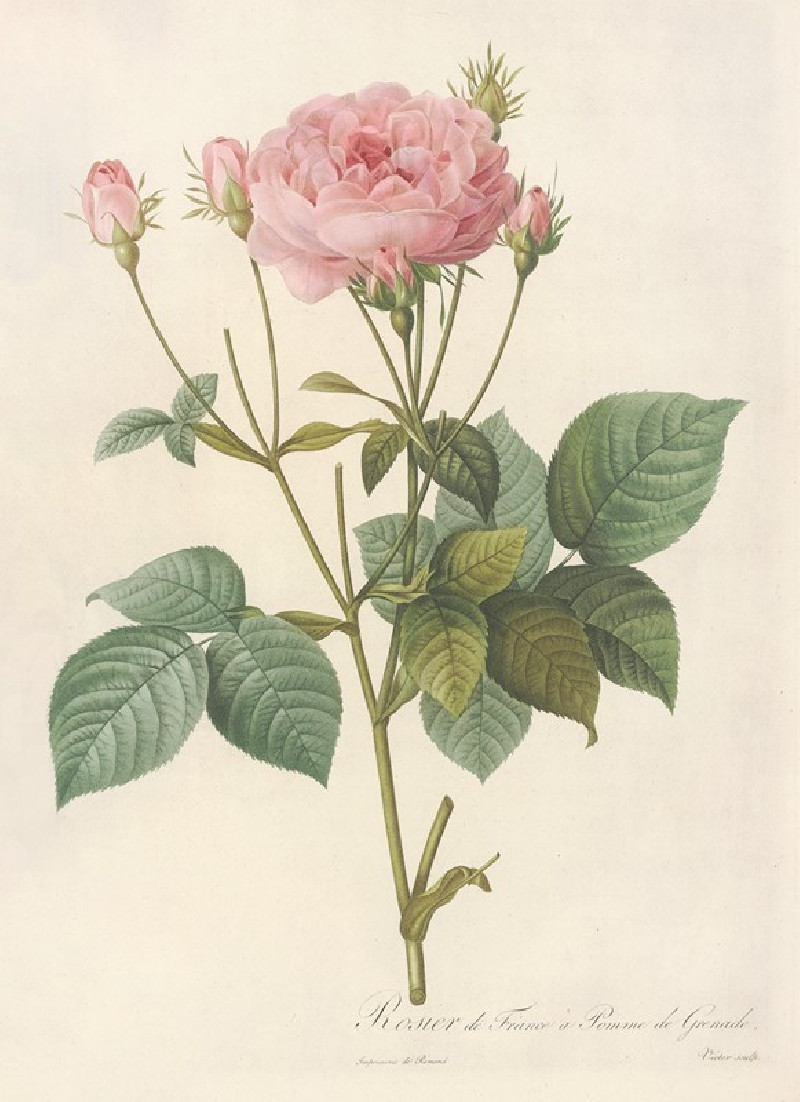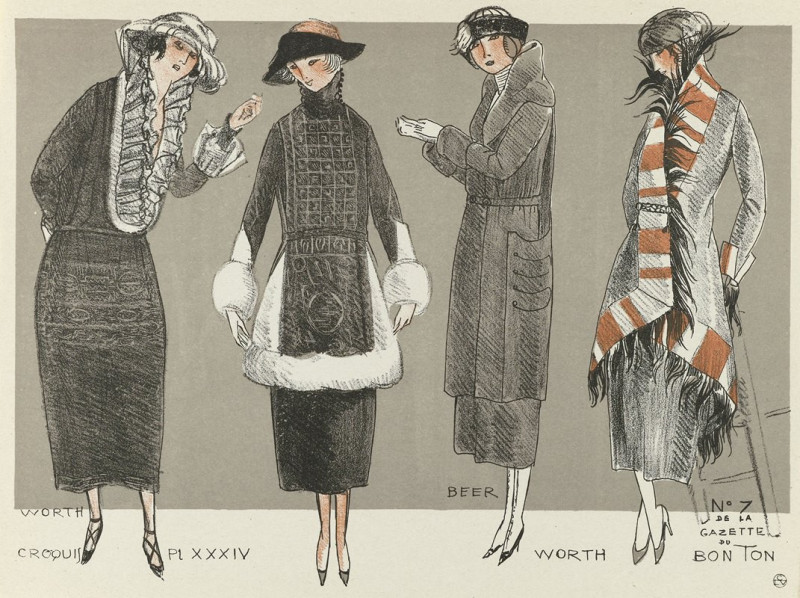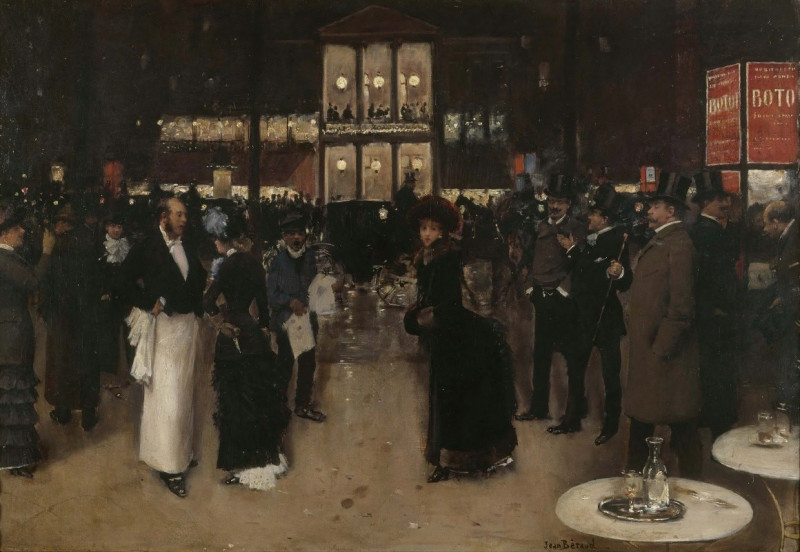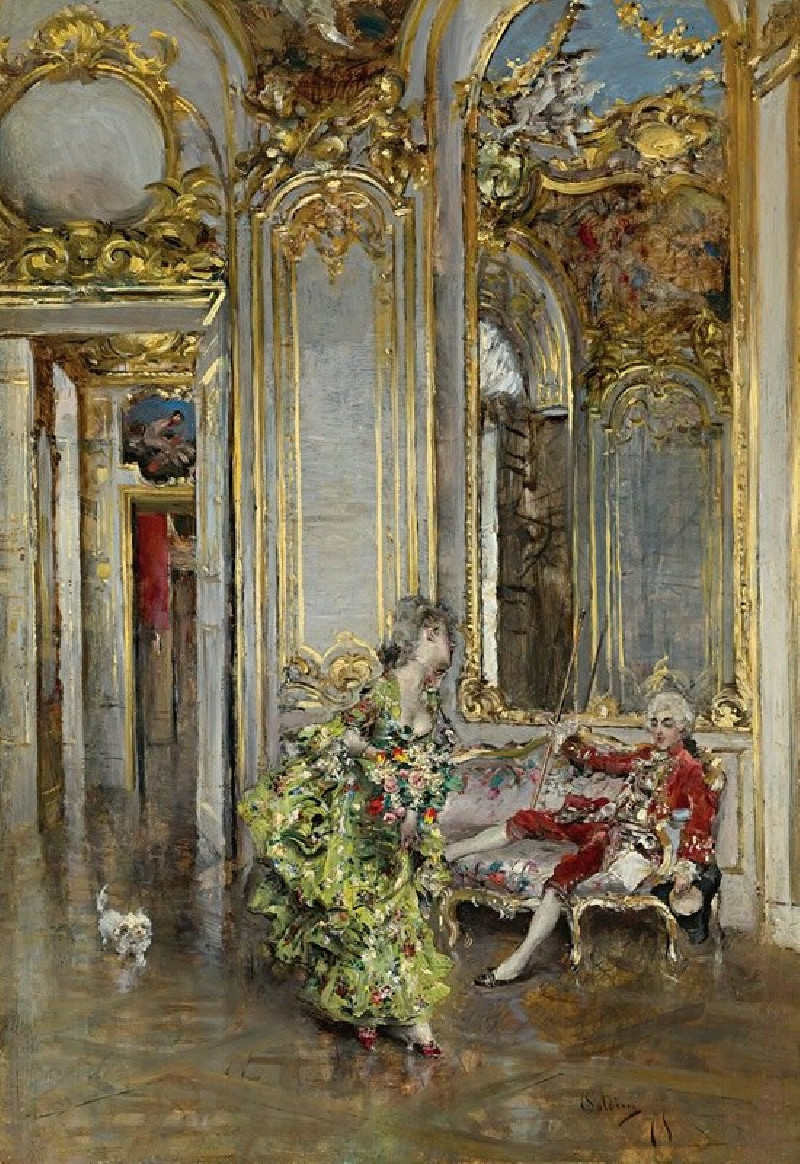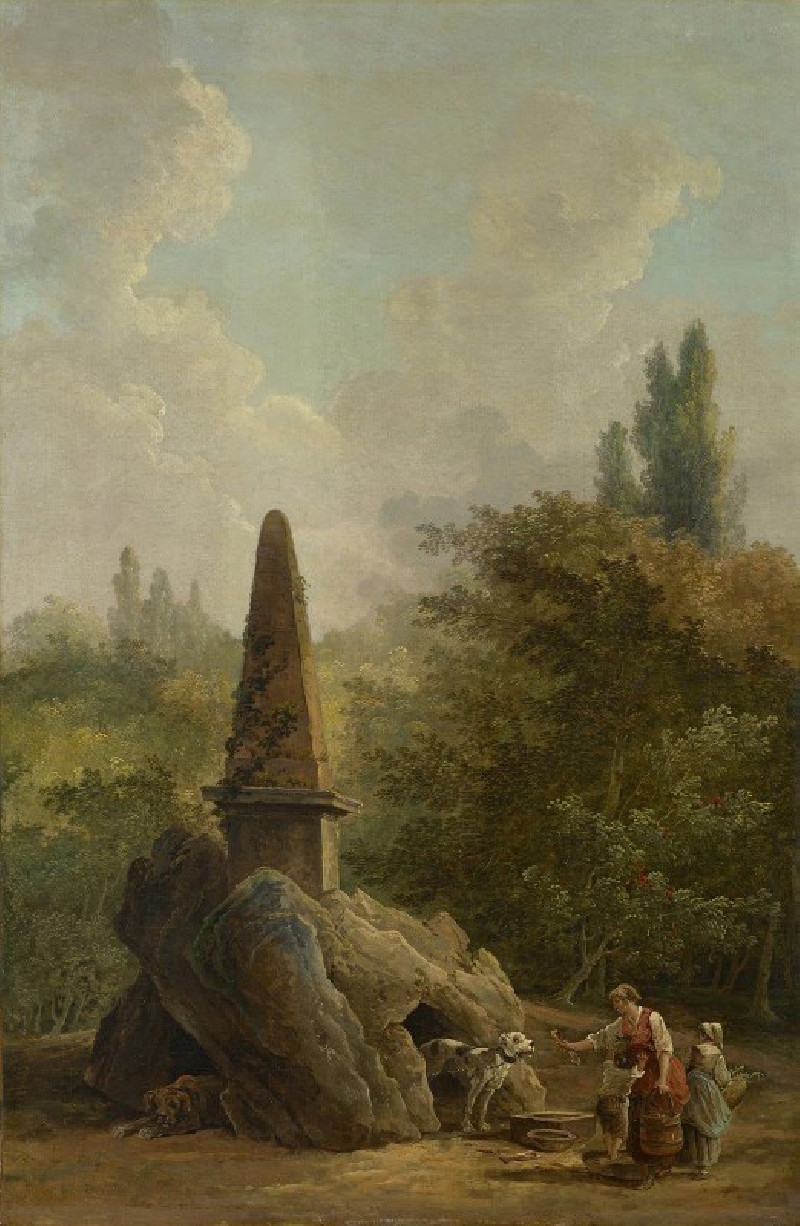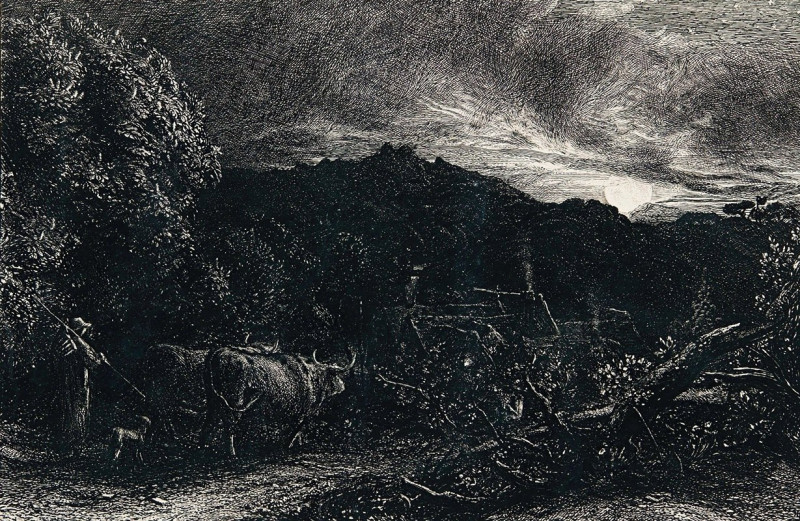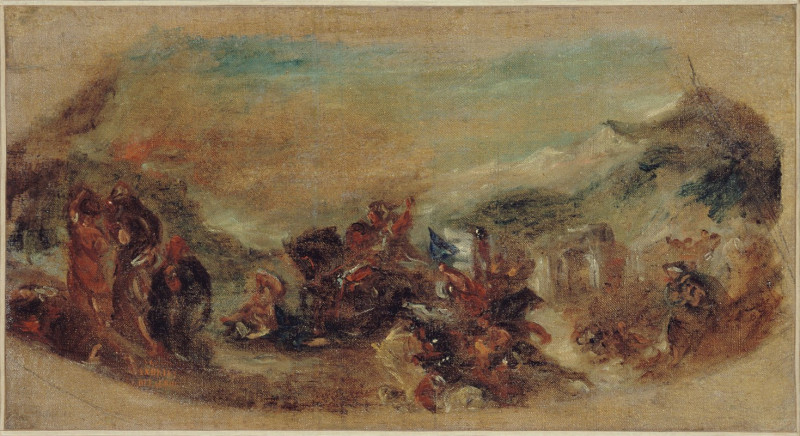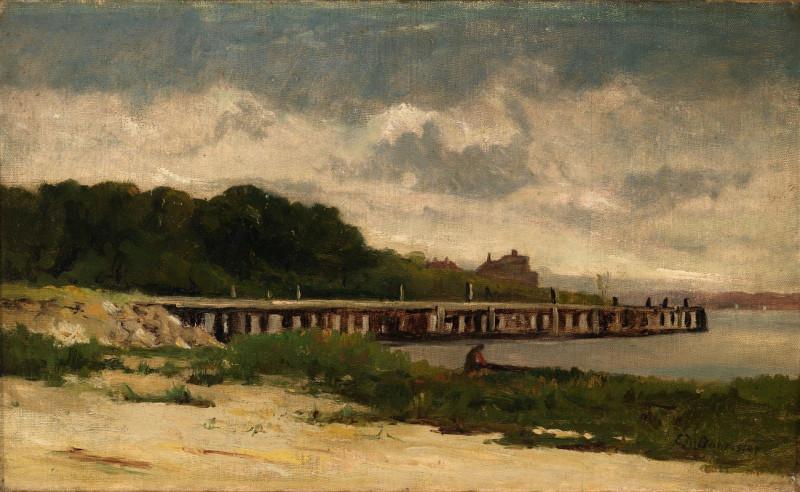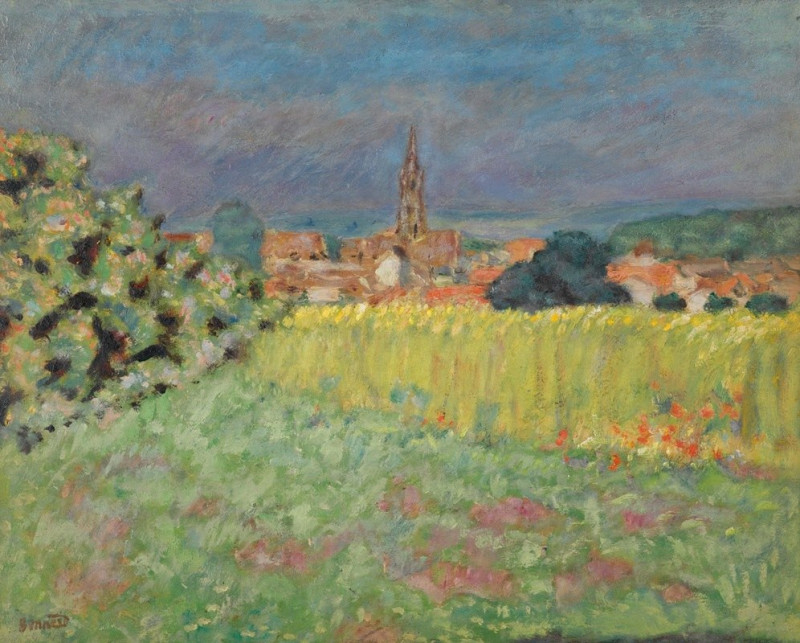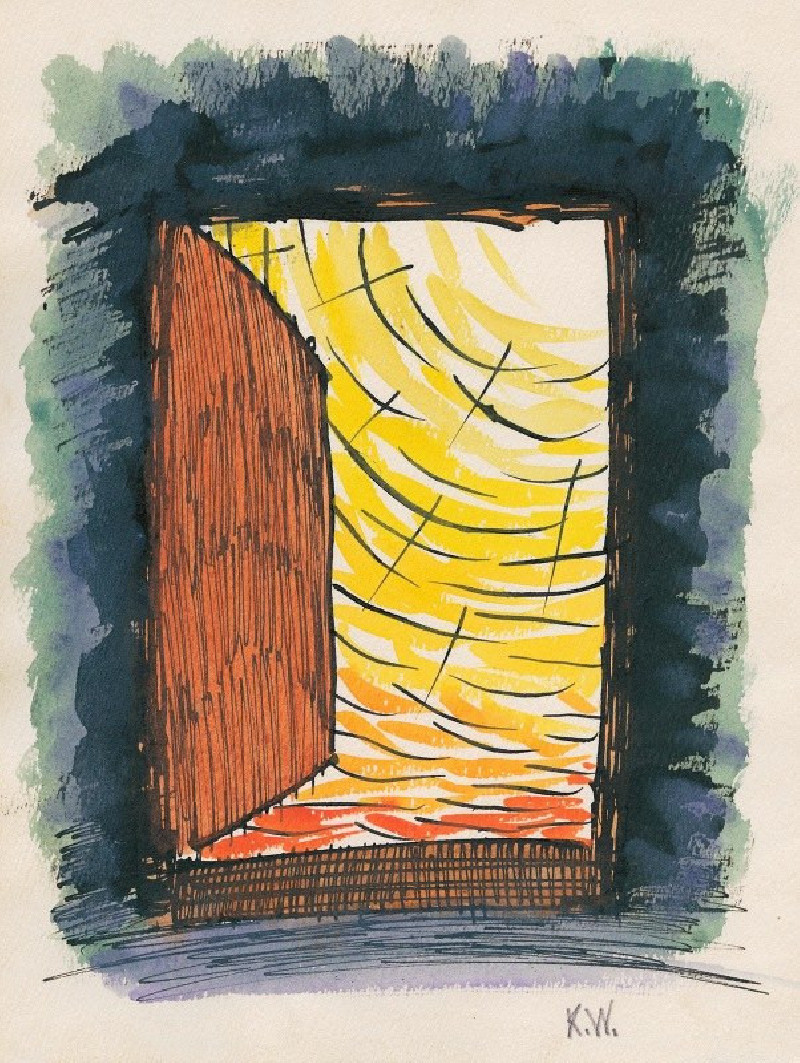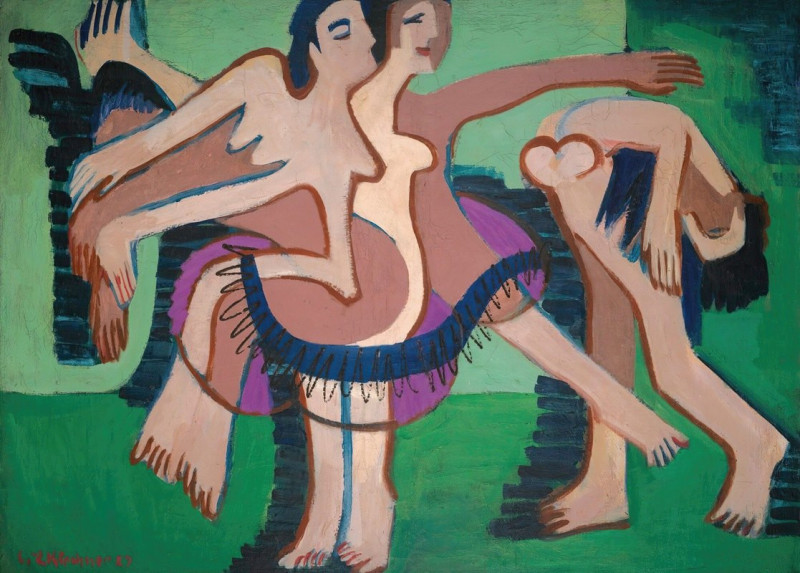Tree Branches. Illustration From Seitei Kacho Gafu
Technique: Giclée quality print
Recommended by our customers
More about this artwork
The painting "Tree Branches" by Watanabe Seitei presents a delicate and minimalist portrayal of nature. It features a single tree branch extending across the top portion of the composition, from which numerous fine tendrils and smaller branches dangle gracefully. Each of these hanging branches bears tiny buds or leaves, detailed with precision, highlighting the artist's meticulous observation and skill in capturing the subtle intricacies of natural forms.The artwork has a spacious and serene quality due to the large areas left blank, which is characteristic of traditional Japanese art where negative space is as important as the depicted forms. The refined strokes and the monochrome use of ink possibly indicate an influence from traditional Japanese ink painting techniques. This piece likely explores themes of natural beauty, tranquility, and possibly the transience of life, as exemplified by the fragile, fleeting nature of the tree branches. The sparse composition invites viewers to appreciate the quiet elegance and simplicity in nature’s details.
Delivery
Reproductions are made to order and take 5 to 7 working days.
We send them out by courier and delivery takes another two working days.
If you need a reproduction sooner, please contact us - we can usually find a solution and produce it a little faster.
If you don't want to pay for postage, you can pick up your paintings at our galleries in Kaunas or Vilnius.
Returns
Yes, reproductions can be returned.
If you have any doubts more than 30 days after the date of purchase, please contact us - we will take the reproduction back for a refund or offer you a replacement!
We accept a maximum of two returns per customer - please note that we make reproductions to order, so please choose responsibly.
We do not refund shipping expenses.


